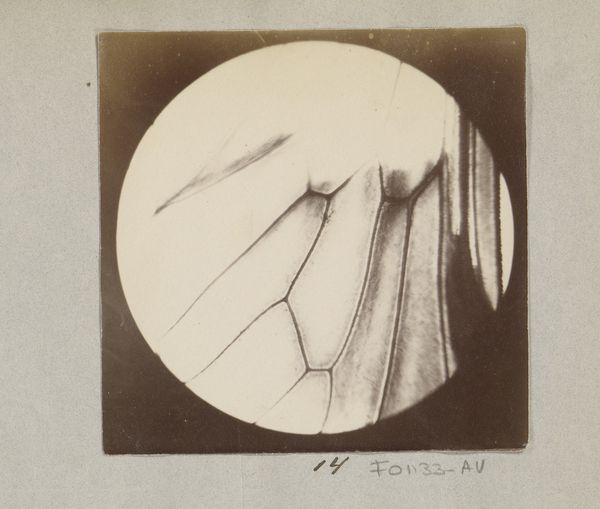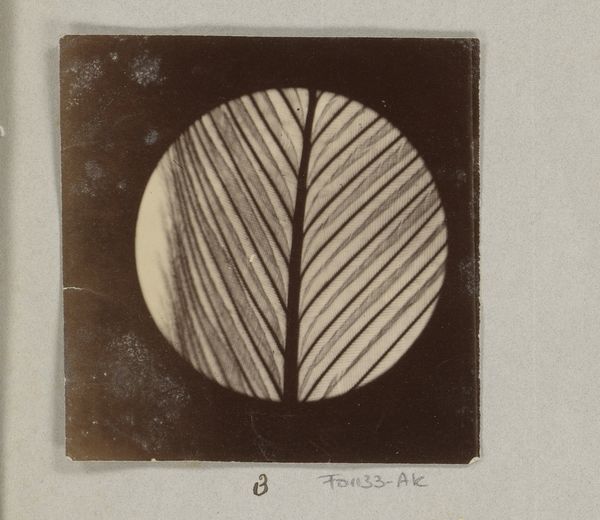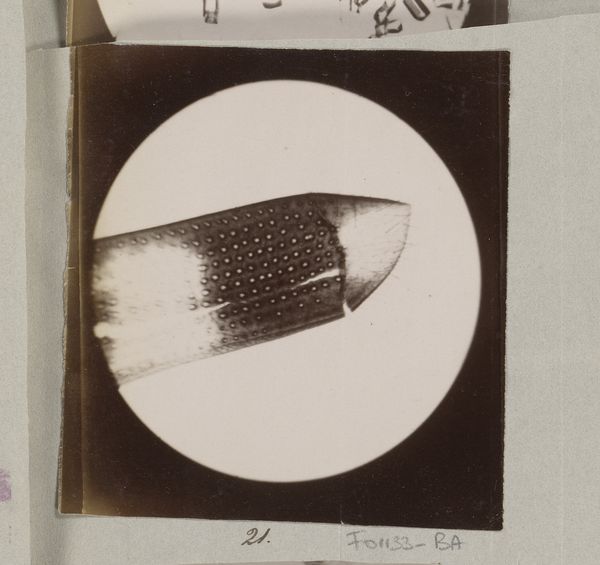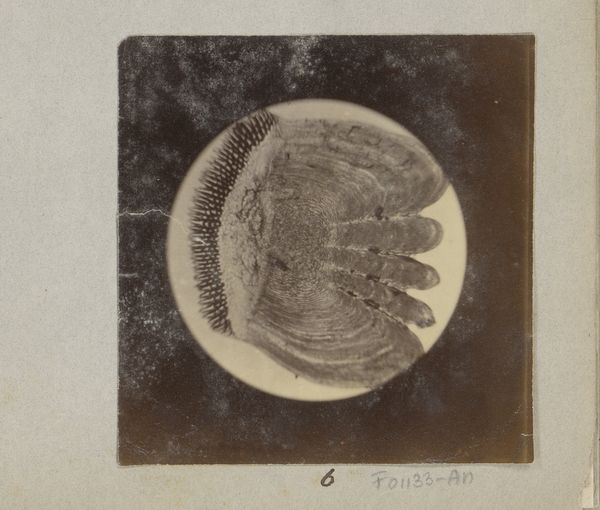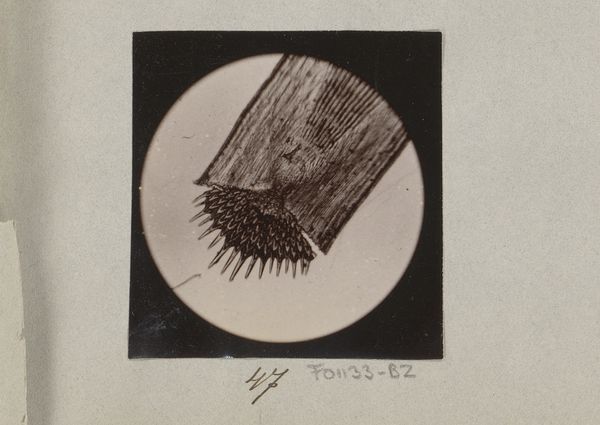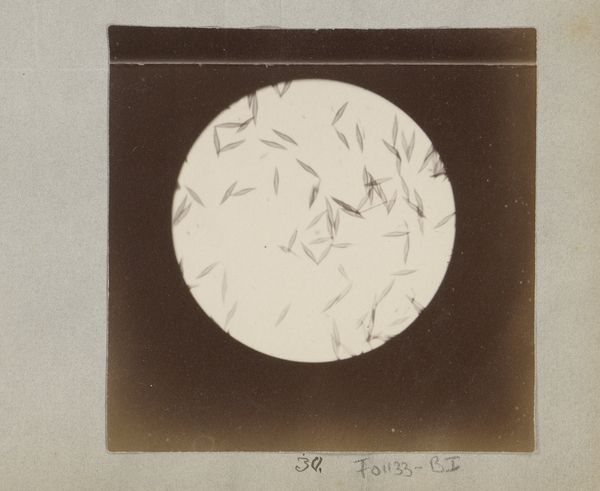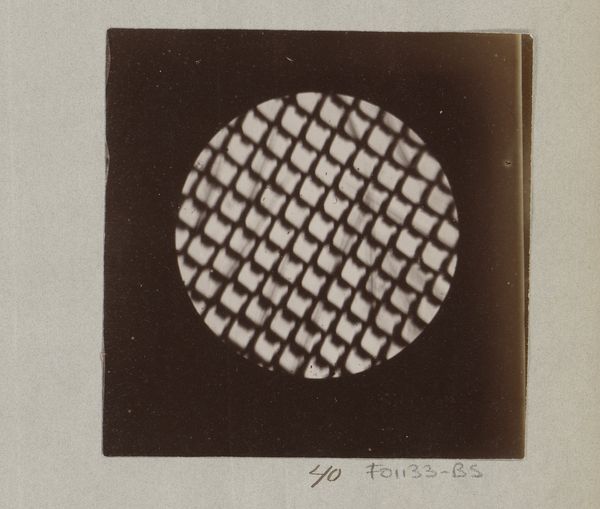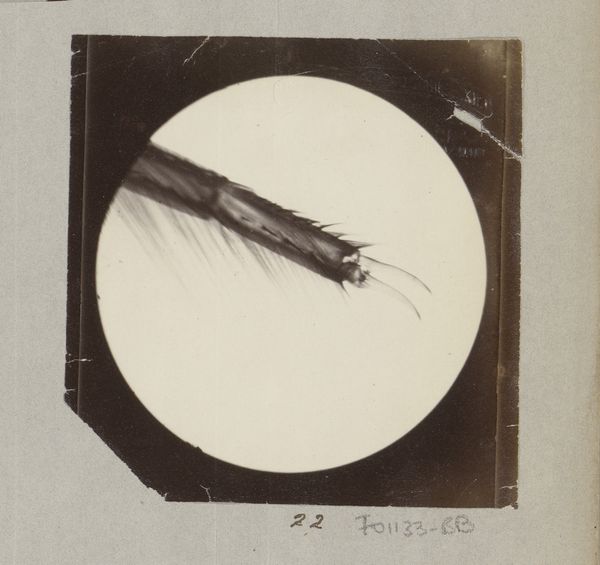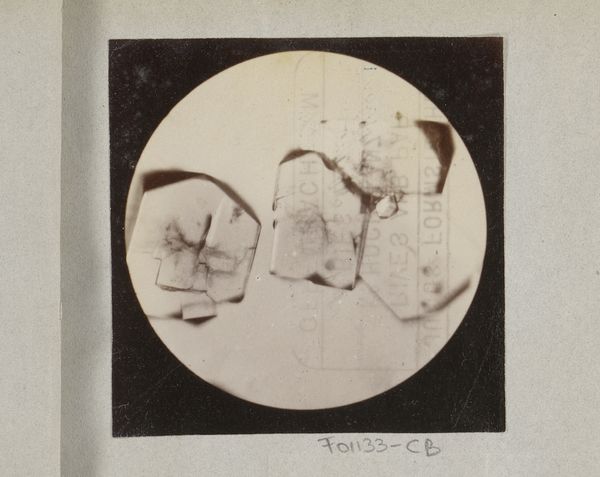
Microscopische opname van de schub van een tong, 25 keer vergroot 1887 - 1888
0:00
0:00
print, photography, gelatin-silver-print
#
still-life-photography
#
non-objective-art
# print
#
photography
#
gelatin-silver-print
#
realism
Dimensions: height 69 mm, width 69 mm
Copyright: Rijks Museum: Open Domain
Curator: This striking image before us, created between 1887 and 1888 by Marinus Pieter Filbri, is a gelatin-silver print titled, "Microscopische opname van de schub van een tong, 25 keer vergroot"—or, "Microscopic Image of a Tongue Scale, Enlarged 25 Times". Editor: Initially, I find it unnerving. The stark black and white contrasts render an ordinary object alien. There is something almost architectural in its structure. Curator: Precisely! The amplified scale transforms the organic into the abstract. Filbri’s process of capturing such minute detail elevates the seemingly mundane, lending significance to an element usually unnoticed. One might even find parallels to other visual records that scrutinize details otherwise not visible. Editor: Right, and this probing reminds me how science often reinforces existing power structures. How might the language of science, even in a 'simple' photograph like this, perpetuate ways of seeing, or hierarchies of worth when fixating, literally, on details? Consider how phrenology did something similar, to devastating effects. Curator: Interesting, yet I think the symbolic language at play operates beyond just power dynamics. Here, this isolated scale prompts meditation on perception itself—the slippage between scientific objectivity and subjective interpretation. What could such a scale represent symbolically? Could it suggest resilience, protection, or the shedding of old identities? Editor: I appreciate those interpretations but can't shake the idea of visual authority implied. Who has access to these microscopic views, and for what purposes are they employed? Scientific pursuit should always have checks in place. Otherwise, you just end up furthering historical and contemporary inequalities, especially concerning marginalized bodies subjected to such scrutiny without consent or care. Curator: You make crucial points about ethical visuality. And perhaps viewing it with those ethical dimensions will create the change needed to address the underlying inequalities. This image offers a powerful chance to rethink science as not purely neutral—as a mode of seeing with far-reaching social implications. Editor: I agree. Thinking about Filbri's "Microscopic Image" helps connect dots between the personal, the scientific, and the social, spurring critical analysis. Curator: Indeed; I find myself further fascinated by how a single image manages to provoke these reflections.
Comments
No comments
Be the first to comment and join the conversation on the ultimate creative platform.
